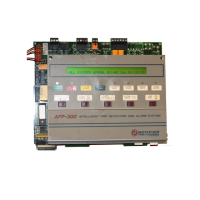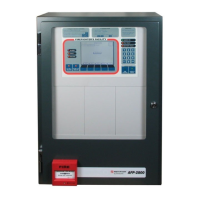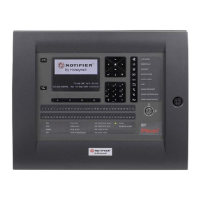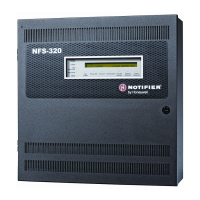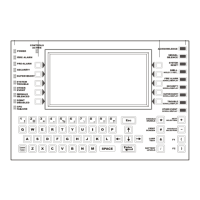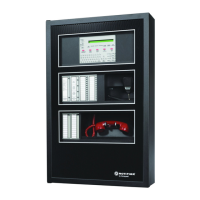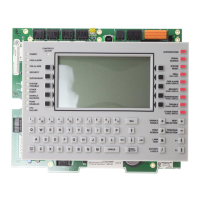DN-5262 • 10/31/05 — Page 5 of 10
Maintenance Warnings. When the drift compensation
performed for a detector reaches a certain level, the performance
of the detector may be compromised, and special warnings are
given. There are three warning levels: (1) Low Chamber value,
usually indicative of a hardware problem in the detector; (2)
Maintenance Alert, indicative of dust accumulation that is near
but below the allowed limit; (3) Maintenance Urgent, indicative
of dust accumulation above the allowed limit. The Maintenance
Alert level allows maintenance before the performance of the
device is compromised.
Sensitivity Adjust. Nine sensitivity levels are provided for
alarm detection. These levels can be set manually, or can
change automatically between day and night. Nine levels of pre-
alarm sensitivity can also be selected, based on predetermined
levels of alarm. Pre-alarm operation can be latching or self-
restoring, and can be used to activate special control functions
that are a subset of the alarm control program.
Self-Optimizing Pre-Alarm. Each detector may be set
for “Self-Optimizing” pre-alarm. In this special mode, the detec-
tor “learns” its normal environment, measuring the peak analog
readings over a long period of time, and setting the pre-alarm
level just above these normal peaks. This allows extremely
sensitive pre-alarm capability with reasonable protection against
non-fire signals.
Cooperating Multi-Detector Sensing. A feature of
intelligent sensing is the ability of a smoke sensor to consider
readings from nearby sensors in making alarm or pre-alarm
decisions. Using logic algorithms, each sensor can include up
to two other sensors in its decision. Without statistical sacrifice
in the ability to resist false alarms, it allows a sensor to increase
its sensitivity to actual smoke by a factor of almost 2 to 1. Multi-
detector sensing also allows the combination of ionization with
photoelectric technology in reaching an alarm decision.
Intelligent Sensing
Intelligent Sensing is a set of software algorithms that provide the AFP-300/400 with industry-leading smoke
detection capability. The development of these sophisticated algorithms are made possible by the close coop-
eration between Notifier and System Sensor, the world leaders in fire detection and alarm technology. These
complex algorithms require many calculations on each reading of each detector, and are made possible by the
very high speed microcomputer used by the AFP-300/400 (16-bit RISC Reduced Instruction Set Computer).
Drift Compensation and Smoothing. These al-
gorithms (U.S. patent pending) identify and compensate
for long-term changes in the analog readings from each
smoke sensor. Long-term changes are usually caused
by dust accumulation inside the smoke chamber. Drift
compensation allows the detector to retain its original
ability to detect actual smoke, and resist false alarms,
even as dirt accumulates. It reduces maintenance re-
quirements by allowing the system to automatically per-
form the periodic sensitivity measurements required by
NFPA. Smoothing filters are also provided by software to
remove transient noise signals, usually caused by elec-
trical interference. Different smoothing algorithms are
used, depending on the sensitivity selection of each de-
tector.
Normal Threshold
5262aw5.wmf
Awacs4.wmf
Awacs2.wmf
Awacs1.wmf
